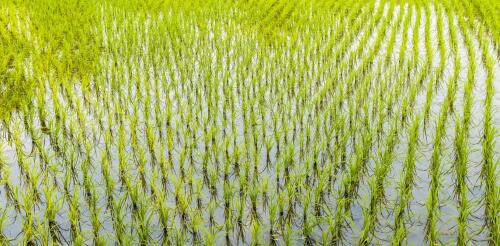Soil health
Each summer, nearly 25,000 acres (10,000 hectares) of rice is cultivated in the Florida Everglades Agricultural Area, a roughly 1,100-square-mile (2,800-square-kilometer) area south of Lake Okeechobee. Farming here requires a delicate touch. The area has lost nearly 6 feet (1.8 meters) of soil in the past century through a process called subsidence. One way to slow down this subsidence and preserve the nutrient-rich soil is to flood the area during Florida’s rainy season and use the fields to grow rice. The fields are flooded using water from adjacent canals. Once the water dries up or seeps away, the rice is harvested. The Conversation asked Associate professor Jehangir Bhadha, an expert in soil sustainability at the University of Florida, how the university got involved with growing rice and what environmental benefits it’s produced. What is the history behind growing rice in the Everglades? Rice was grown in the Everglades Agricultural Area for a brief period...
PFAS chemicals seemed like a good idea at first. As Teflon, they made pots easier to clean starting in the 1940s. They made jackets waterproof and carpets stain-resistant. Food wrappers, firefighting foam, even makeup seemed better with perfluoroalkyl and polyfluoroalkyl substances. Then tests started detecting PFAS in people’s blood. Today, PFAS are pervasive in soil, dust and drinking water around the world. Studies suggest they’re in 98% of Americans’ bodies, where they’ve been associated with health problems including thyroid disease, liver damage and kidney and testicular cancer. There are now over 9,000 types of PFAS. They’re often referred to as “forever chemicals” because the same properties that make them so useful also ensure they don’t break down in nature. Facing lawsuits over PFAS contamination, the industrial giant 3M, which has made PFAS for many uses for decades, announced a US$10.3 billion settlement with public w...
If the TV series “Dirty Jobs” covered animals as well as humans, it would probably start with dung beetles. These hardworking critters are among the insect world’s most important recyclers. They eat and bury manure from many other species, recycling nutrients and improving soil as they go. Dung beetles are found on every continent except Antarctica, in forests, grasslands, prairies and deserts. And now, like many other species, they are coping with the effects of climate change. I am an ecologist who has spent nearly 20 years studying dung beetles. My research spans tropical and temperate ecosystems, and focuses on how these beneficial animals respond to temperature changes. Insects don’t use internally generated heat to maintain their body temperature. Adults can take actions such as moving to warmer or colder areas. However, earlier life stages such as larvae are often less mobile, so they can be strongly affected by changing temperatures. But dun...


